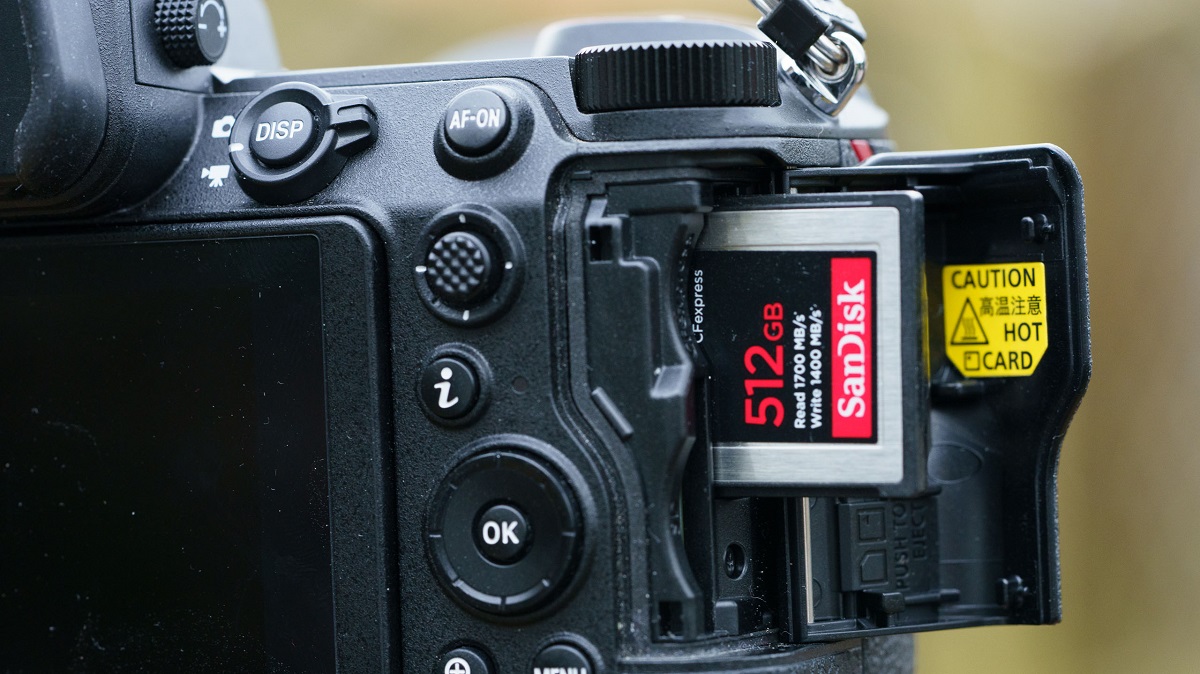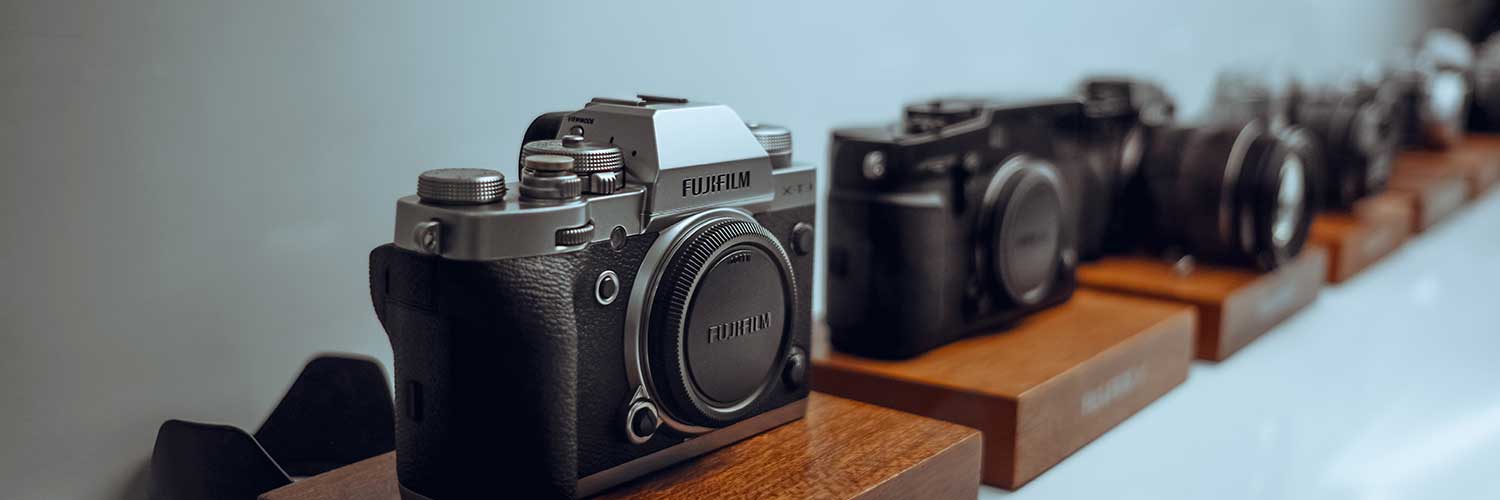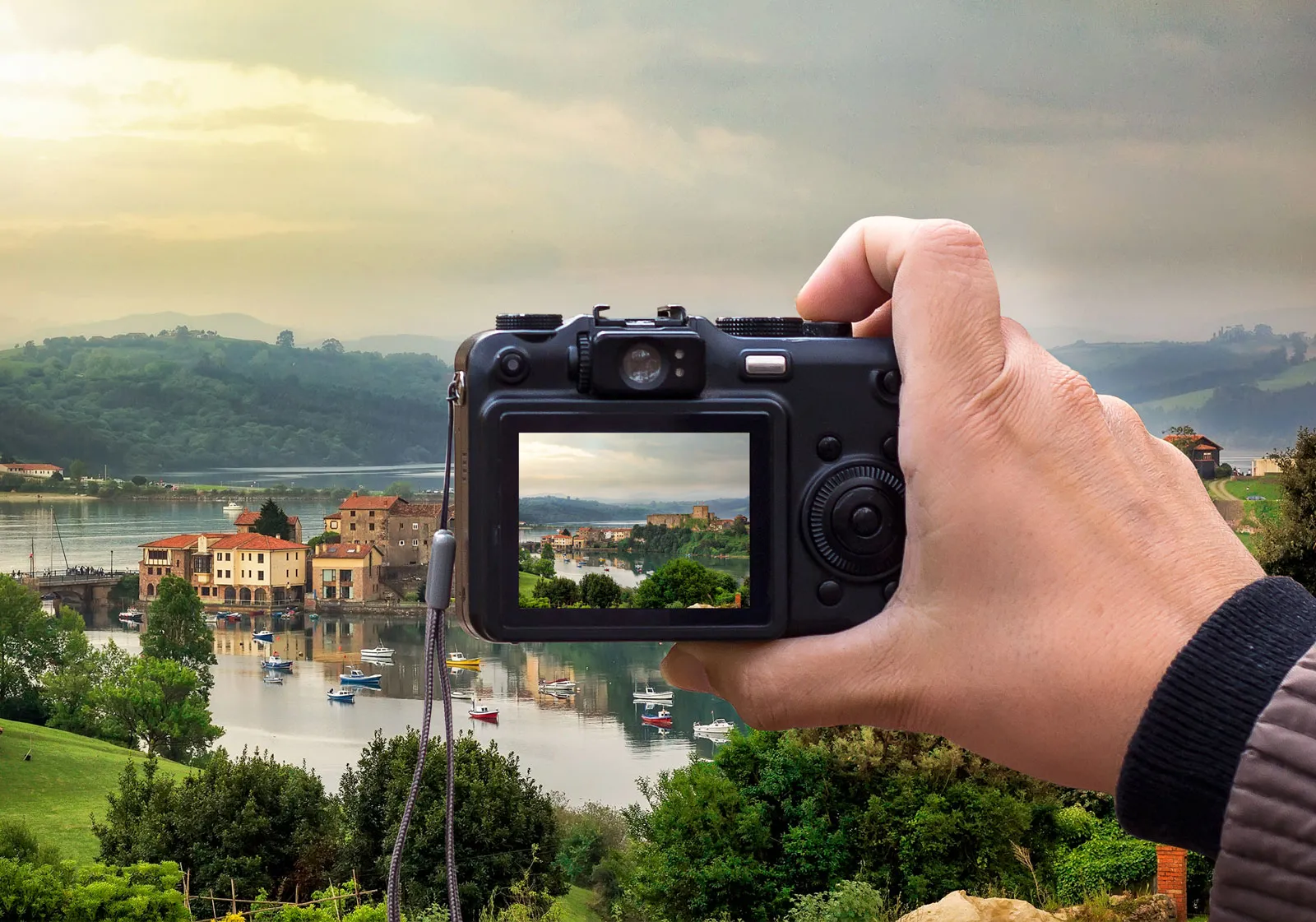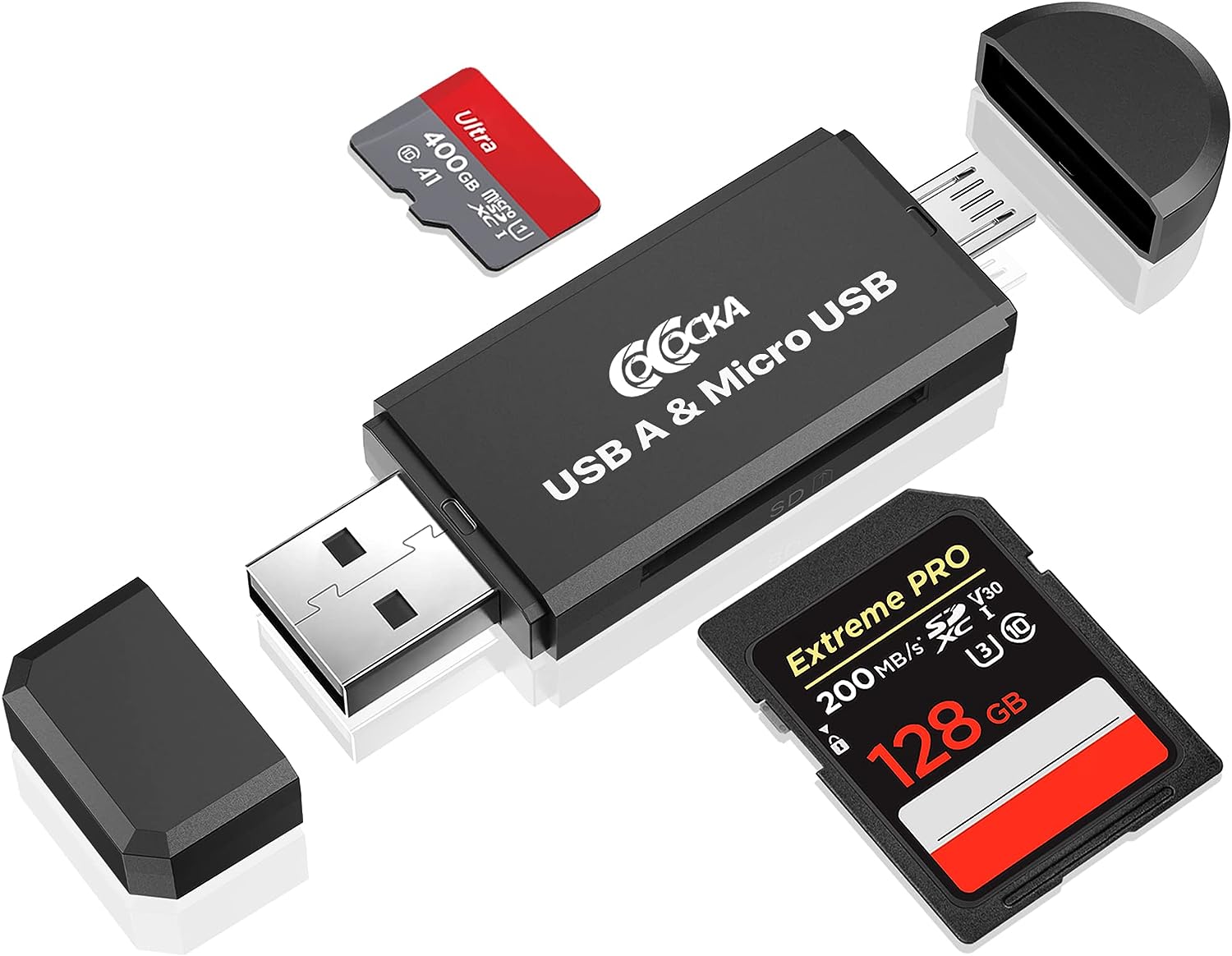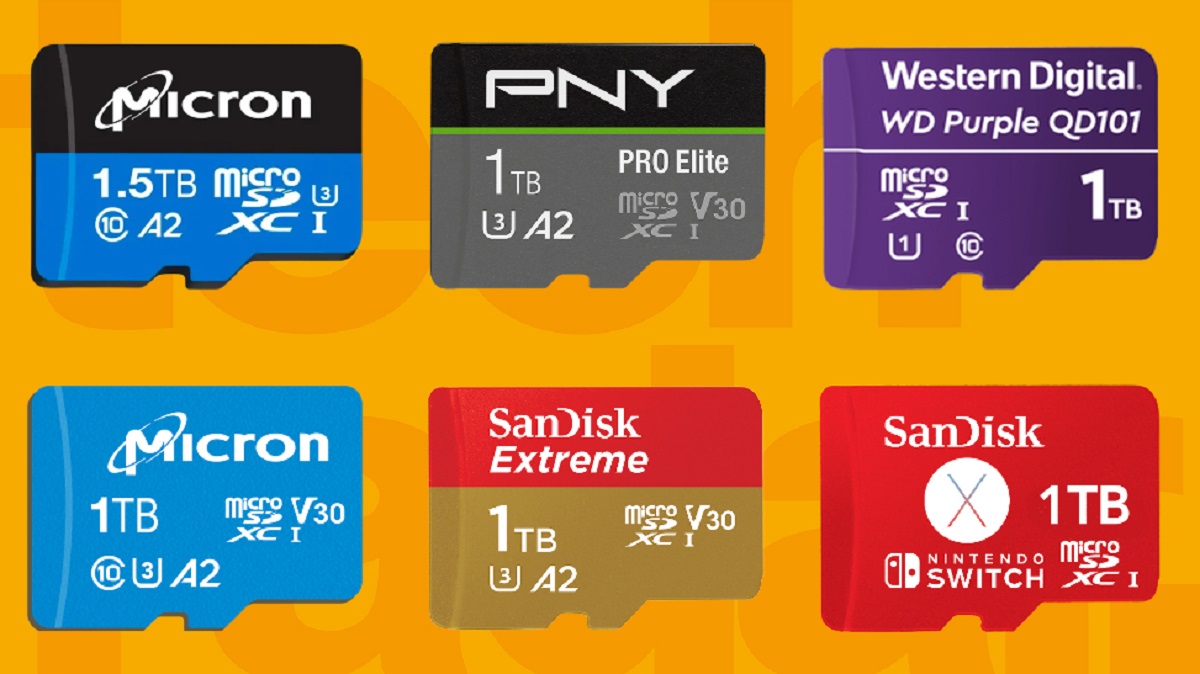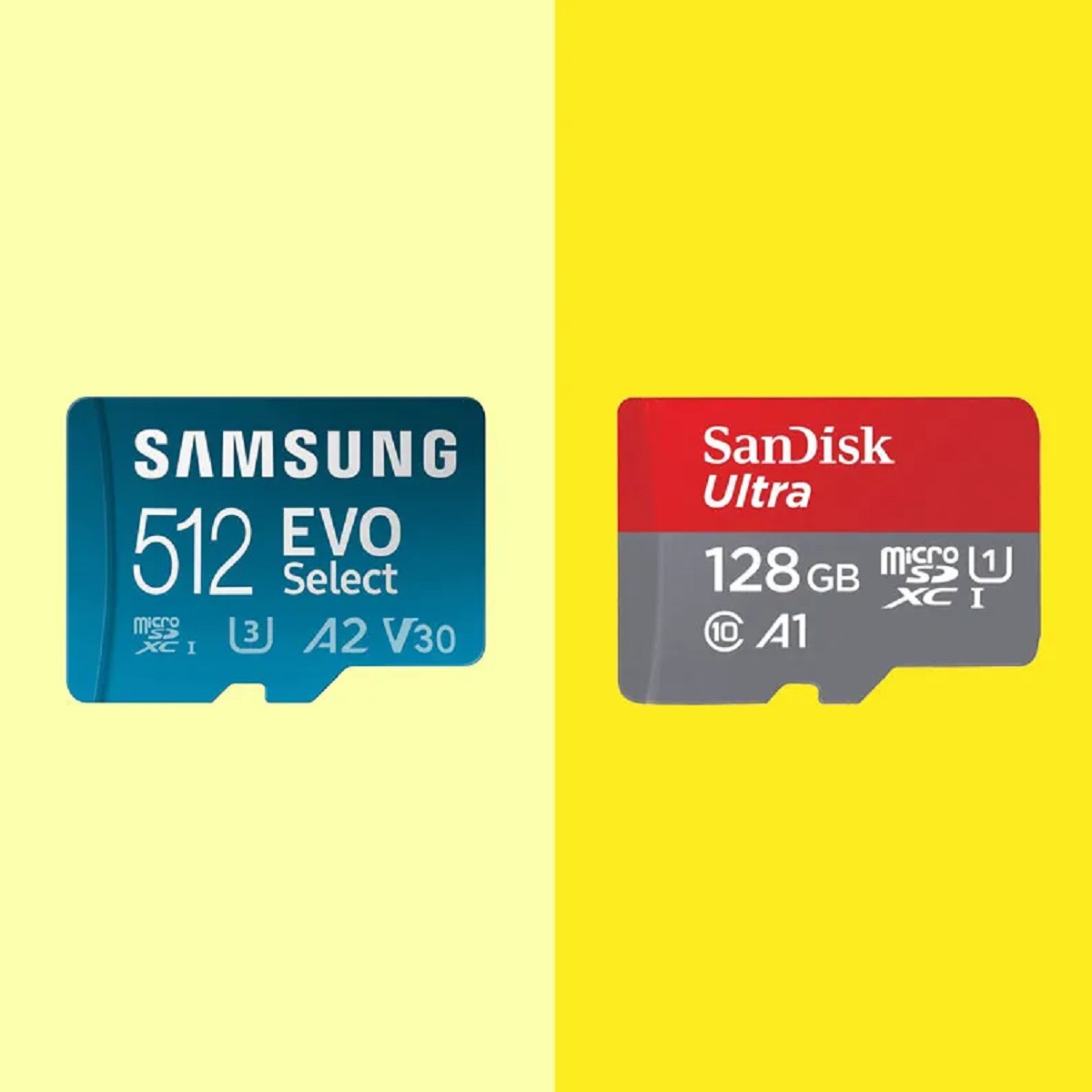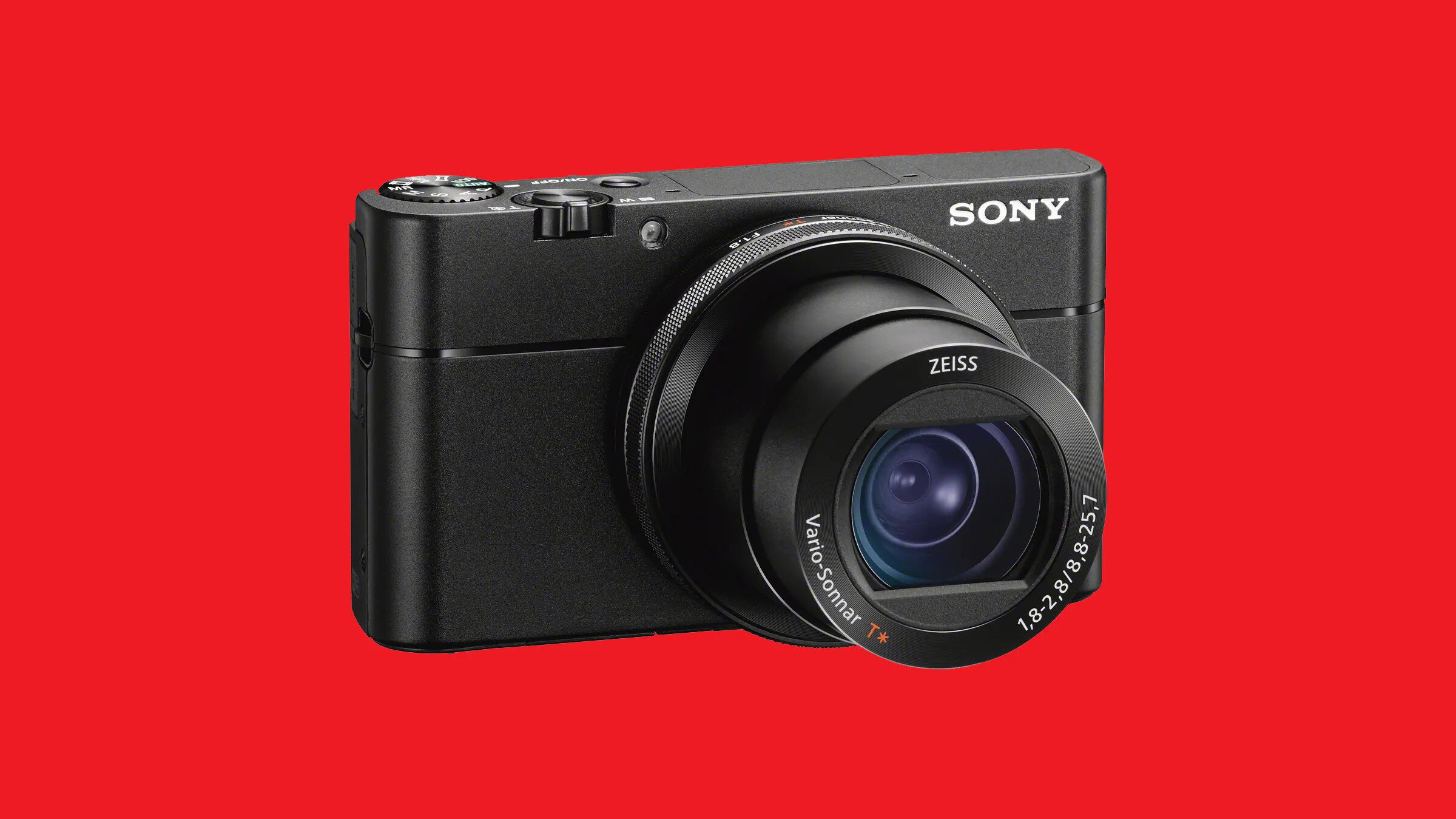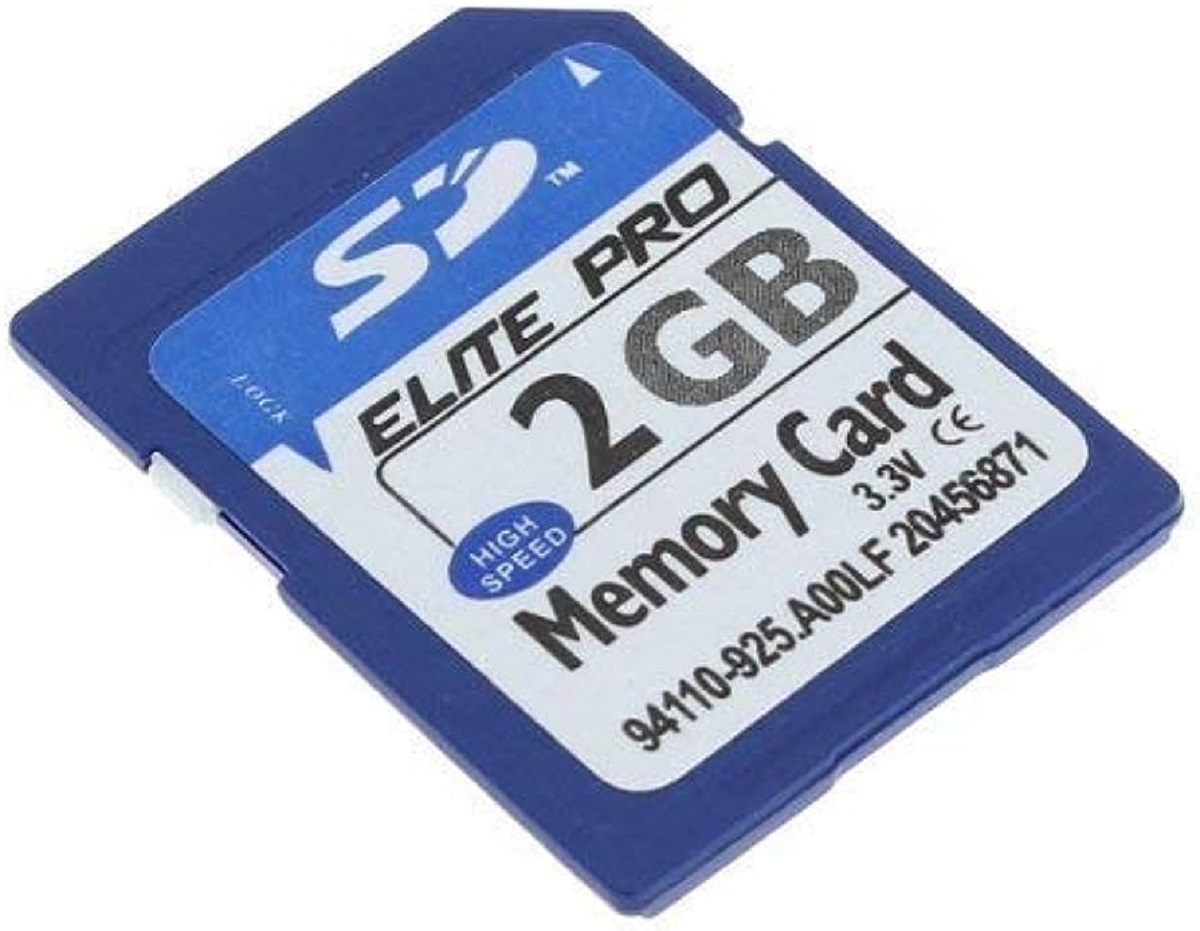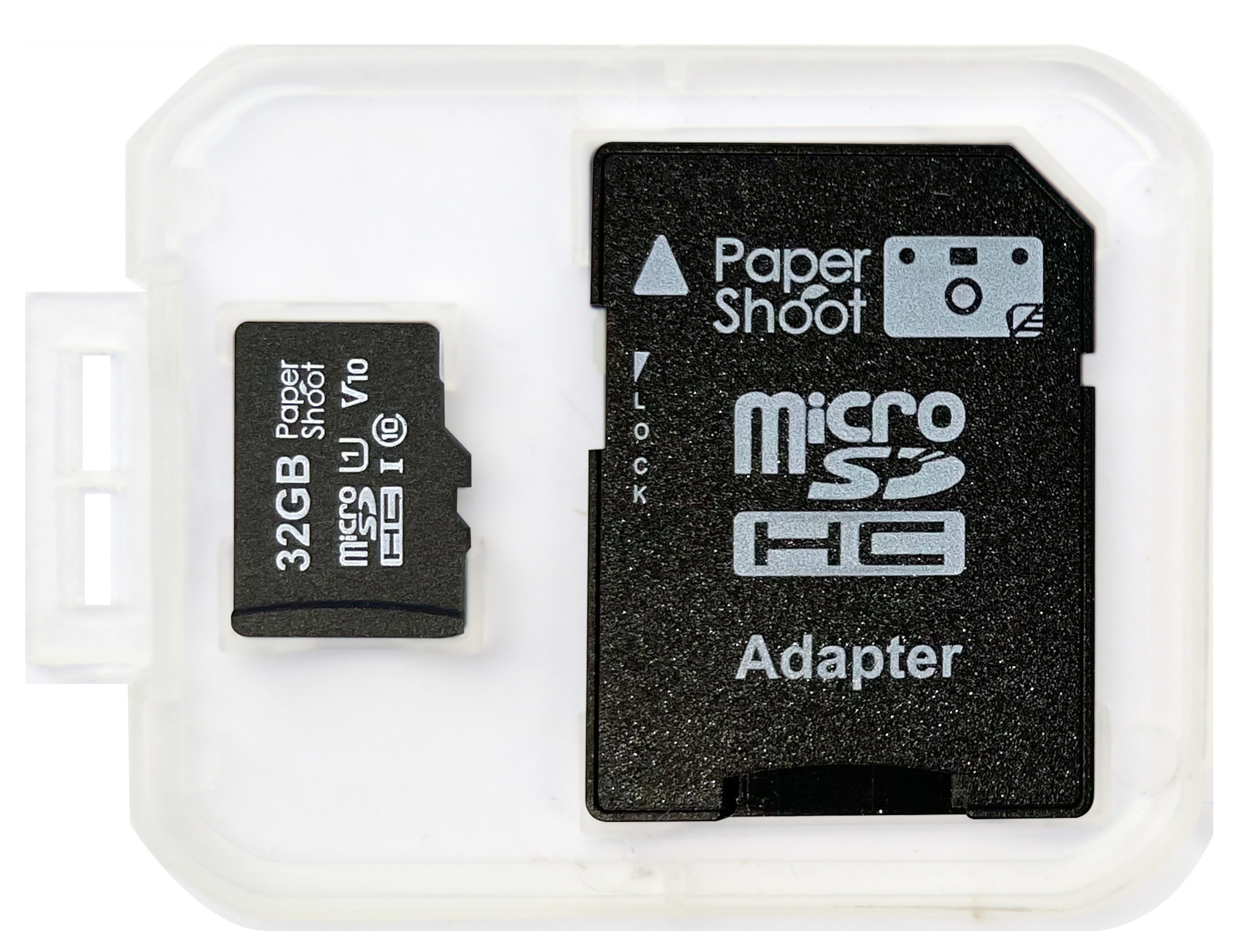Introduction
Welcome to the world of digital photography, where every candid moment can be captured and cherished forever. One essential component that is crucial for capturing and storing high-quality images is the memory card. A memory card serves as the storage device for your digital camera, holding all the precious moments you capture.
Choosing the right memory card for your digital camera is essential to ensure optimal performance and reliability. With various options available in the market, it can be overwhelming to decide which one to buy. In this article, we will explore the factors to consider when purchasing a memory card for your digital camera, the different types of memory cards available, and provide recommendations for different types of photography.
When buying a memory card for your digital camera, several factors should be taken into account. The first consideration is compatibility. Check your camera’s specifications to determine the type of memory card it supports. Different cameras may require specific formats such as SD (Secure Digital), MicroSD, CompactFlash, XQD, or CFast.
The capacity and speed of the memory card are also important factors. The capacity determines how many photos and videos the card can store, while the speed determines how quickly data can be written or read from the card. The capacity is typically measured in gigabytes (GB), with larger capacities allowing for more storage. Speed is measured in megabytes per second (MB/s), with higher speeds enabling faster transfer and write times.
Another consideration is the intended use of the memory card. Different types of photography, such as casual everyday shooting, professional sports or wildlife photography, or high-resolution video recording, may have specific requirements for memory card speed and capacity. It’s essential to choose a memory card that can keep up with your photography needs and not limit your creative possibilities.
Lastly, it’s worth mentioning that using and maintaining your memory card correctly can prolong its lifespan and ensure data integrity. Regularly formatting the card within your camera, using a protective case when not in use, and avoiding extreme temperatures or conditions are some best practices to follow.
Now that we’ve covered the basics let’s dive deeper into the different types of memory cards available for digital cameras and explore their unique features and benefits.
Factors to consider when buying a memory card for your digital camera
Choosing the right memory card for your digital camera is not just about picking the first one you come across. There are several important factors to consider to ensure compatibility, optimal performance, and reliability. Let’s explore these factors in detail.
Compatibility: The first and foremost factor to consider is compatibility. Check your digital camera’s specifications to determine the type of memory card it supports. Different camera models may require specific formats such as SD (Secure Digital), MicroSD, CompactFlash, XQD, or CFast. Make sure you choose a memory card that is compatible with your camera to avoid any compatibility issues.
Capacity: The capacity of the memory card determines how many photos and videos you can store. It is measured in gigabytes (GB). Choose a capacity that suits your needs based on the frequency of your photography sessions, the file size of your images, and the amount of video recording you plan to do. It’s always a good idea to opt for a higher capacity card to give yourself ample storage space.
Speed: The speed of the memory card plays a crucial role in the performance of your digital camera. It determines how quickly data can be written or read from the card. The speed is measured in megabytes per second (MB/s). For instance, if you shoot in continuous burst mode or record high-definition videos, you’ll need a memory card with a higher speed rating to ensure smooth and uninterrupted performance.
Intended Use: Consider the type of photography you plan to engage in when selecting a memory card. Different types of photography, such as casual everyday shooting, professional sports or wildlife photography, or high-resolution video recording, may have specific requirements for memory card speed and capacity. Analyze your photography needs and choose a memory card that can keep up with your shooting demands.
Reliability: Reliability is a critical factor to consider when investing in a memory card. Look for well-known brands with a reputable track record for producing high-quality memory cards. This will ensure that your valuable images and videos are stored securely, with minimal risk of data loss or corruption.
Price: Price is a factor that may vary depending on the brand, capacity, and speed of the memory card. Set a budget and find a balance between your photography needs and the price point that you are comfortable with. Remember, a memory card is a long-term investment, so it’s worth considering the performance and reliability it offers rather than solely focusing on the price tag.
By carefully considering these factors, you can make an informed decision and choose the right memory card that perfectly suits your digital camera’s requirements. Taking the time to choose the right memory card will enhance your photography experience, allowing you to capture and preserve your precious memories without any limitations or worries.
Types of memory cards for digital cameras
When it comes to memory cards for digital cameras, there are several options available, each with its own unique features and benefits. Let’s explore the most common types of memory cards you’re likely to encounter:
SD (Secure Digital) cards: SD cards are one of the most popular and widely used memory cards for digital cameras. They come in different sizes and formats, including standard SD, miniSD, and microSD. SD cards are known for their reliability, compatibility, and high storage capacities. They are commonly used in compact cameras, DSLRs, and mirrorless cameras.
MicroSD cards: MicroSD cards are smaller in size compared to SD cards and are commonly used in smartphones, action cameras, and some compact cameras. Despite their small size, microSD cards offer impressive storage capacities and transfer speeds. They can also be used with an adapter to fit into devices that support standard SD cards.
CompactFlash cards: CompactFlash (CF) cards were once the go-to option for professional photographers and high-end cameras. They offer robust performance, high capacity, and fast transfer speeds. CompactFlash cards are still in use today, mainly in some professional DSLR cameras that require the fastest and most reliable memory card options.
XQD cards: XQD cards are specially designed for professional-grade cameras that demand lightning-fast performance and maximum reliability. These cards offer exceptionally high read and write speeds, making them ideal for high-resolution photography and 4K video recording. Although XQD cards are not as widely available as other formats, they have gained popularity among professional photographers and videographers.
CFast cards: CFast cards are another memory card format developed specifically for professional cameras that require high-speed performance. These cards offer even faster write speeds compared to CF cards, making them suitable for continuous burst shooting and high-bitrate video recording. CFast cards are commonly used in cinema cameras and some professional-grade DSLRs.
When choosing a memory card for your digital camera, it’s essential to consider the compatibility of your camera and the requirements of your photography style. Make sure to check your camera’s manual or manufacturer’s website to determine the supported memory card types and recommended specifications.
Remember, no matter the type of memory card you choose, it’s crucial to handle them with care. Avoid exposing them to extreme temperatures, moisture, or physical damage. Invest in a sturdy memory card case or holder to protect them while on the go. By selecting the right type of memory card for your camera and treating it with care, you can ensure optimal performance and reliability throughout your photography journey.
SD (Secure Digital) cards
SD (Secure Digital) cards are one of the most commonly used types of memory cards for digital cameras. They offer a reliable and versatile storage solution for a wide range of devices, including compact cameras, DSLRs, and mirrorless cameras. Let’s explore the key features and benefits of SD cards:
Compatibility: SD cards are compatible with a vast array of devices, making them widely accessible and easy to use. Many digital cameras have an SD card slot built-in, ensuring effortless compatibility and seamless integration.
Size and formats: SD cards come in different sizes and formats, including standard SD, miniSD, and microSD. The standard SD card measures 32mm x 24mm and is generally used in larger cameras. MiniSD and microSD cards are smaller versions and are often used in smartphones, action cameras, and other compact devices. The smaller microSD cards can be used with an adapter to fit into devices that support standard SD cards.
Capacity and Speed: SD cards have varying storage capacities ranging from a few gigabytes to over a hundred gigabytes. The capacity you choose largely depends on your photography needs and the size of the files you expect to store. Additionally, SD cards come in different speed classes, indicated by numbers inside a circle. Higher numbers signify faster data transfer rates, with Class 2 being the slowest and Class 10 being the fastest.
Reliability: SD cards are known for their durability and reliability. They are designed to withstand various environmental conditions, such as temperature fluctuations, humidity, and even accidental drops. It’s always advisable to choose SD cards from reputable brands known for their quality and reliable performance.
Benefits of SD cards: One of the standout benefits of SD cards is their widespread availability. They are readily available in most electronic stores and online marketplaces, offering a wide range of choices in terms of brand, capacity, and speed. SD cards are also often more affordable compared to other memory card formats, making them a cost-effective option for photographers on a budget.
When purchasing an SD card for your digital camera, it’s important to ensure compatibility. Check your camera’s manual or specifications to determine the type and size of SD card it supports. Consider your storage needs, taking into account the frequency of your photography sessions and the sizes of the files you typically work with. Additionally, if you plan to record high-definition videos or shoot in burst mode, it’s recommended to opt for higher-capacity and higher-speed SD cards.
Remember to handle SD cards with care. Avoid exposing them to extreme temperatures, water, or physical damage. Regularly back up your files from the SD card to a computer or external hard drive to prevent any data loss. By following these practices, SD cards can serve as reliable and efficient storage solutions, enabling you to capture and preserve your photographic moments with ease.
MicroSD cards
MicroSD cards are a smaller variant of the popular SD (Secure Digital) cards and have become increasingly popular in recent years. They offer a compact, versatile, and high-capacity storage solution for a wide range of devices, including smartphones, action cameras, and some compact digital cameras. Let’s explore the key features and benefits of MicroSD cards:
Compact size: As the name suggests, MicroSD cards are significantly smaller than standard SD cards. Measuring just 15mm x 11mm, these tiny cards are designed to fit into devices with limited space. The compact size makes MicroSD cards particularly suitable for smaller devices such as smartphones and action cameras.
Adapter compatibility: Despite their small size, MicroSD cards can be used with an adapter to fit into devices that support standard SD cards. This versatility allows you to easily transfer photos and videos between devices that have different card slot sizes.
Capacity and Speed: MicroSD cards come in various storage capacities, ranging from a few gigabytes to several terabytes. With evolving technology, MicroSD cards now offer ample space to store thousands of high-resolution photos and hours of HD video footage. Similar to SD cards, MicroSD cards also come in different speed classes, indicating the data transfer rates.
Expandable storage: One major advantage of using MicroSD cards in devices like smartphones is the ability to expand the storage capacity. Many smartphones have limited built-in storage, but the presence of a MicroSD card slot allows you to easily add more storage space to accommodate your growing collection of photos, videos, and apps.
Portability: MicroSD cards are incredibly portable, fitting snugly into the smallest of pockets or compartments. This makes them an excellent choice for photographers who are always on the go and need a convenient and reliable storage option to capture memories wherever they may be.
Affordability: MicroSD cards are often more affordable compared to larger-sized memory cards like SD cards or other formats. The wide availability and competitive market make it easier to find MicroSD cards at reasonable prices, making them a cost-effective choice for photographers and users looking for additional storage without breaking the bank.
When purchasing a MicroSD card, consider the compatibility with your device and the specific requirements of your photography or recording needs. Ensure that your device supports MicroSD cards and that it can handle the capacity and speed needed for your intended use, such as 4K video recording or continuous burst shooting.
Remember, it’s important to handle MicroSD cards with care, due to their smaller size. Protect them from physical damage, moisture, and extreme temperatures. Regularly back up your files to a computer or cloud-based storage to prevent any potential data loss.
Overall, MicroSD cards offer a compact and versatile storage solution, providing ample space and convenience for your photography and multimedia needs. Whether used in smartphones, action cameras, or other compatible devices, MicroSD cards continue to evolve and expand, allowing us to capture and store our memories in a portable and efficient manner.
CompactFlash cards
CompactFlash (CF) cards have been a steadfast choice for professional photographers and high-end cameras for many years. With their larger form factor and robust performance, CompactFlash cards offer both reliability and versatility. Let’s delve into the key features and advantages of CompactFlash cards:
Size and design: CompactFlash cards are larger in size compared to SD or MicroSD cards. They measure 42.8mm x 36.4mm and have a more robust design. This larger size allows for additional storage capacity and offers increased durability for extended use in demanding shooting conditions.
Performance and speed: CompactFlash cards often excel in terms of performance and speed. They are designed to handle high write speeds, making them ideal for continuous burst shooting, professional-grade DSLRs, and video recording. Faster write speeds allow for quick and seamless transferring of large RAW files or high-definition videos.
Storage capacity: CompactFlash cards are available in varying storage capacities, ranging from several gigabytes to terabytes. This flexibility enables photographers to choose a capacity that suits their specific needs, whether it’s for casual shooting or professional-level photography that generates large files.
Compatibility: While the popularity of CompactFlash cards has waned slightly with the rise of SD cards, many high-end cameras, including some professional DSLRs, still feature CompactFlash card slots. Therefore, if you own a camera that supports CompactFlash cards, or if you prefer their performance advantages, they remain a suitable option.
Reliability and durability: CompactFlash cards are known for their durability and resilience, making them an excellent choice for photographers working in rugged environments or adverse weather conditions. They can withstand high impact, extreme temperatures, and even exposure to water, providing peace of mind in challenging shooting conditions.
Professional-grade usage: CompactFlash cards have long been favored by professional photographers due to their high performance and reliability. They are widely used in industries such as fashion, sports, and wildlife photography, where speed, capacity, and reliability are vital. Many top-of-the-line DSLR cameras from renowned brands cater to CompactFlash cards, offering unprecedented performance and responsiveness.
When considering a CompactFlash card for your camera, it’s crucial to ensure compatibility. Check your camera’s specifications to confirm if it supports CompactFlash cards and if there are any limitations on capacity or speed. Additionally, consider the level of photography you engage in and assess whether CompactFlash cards are the best fit for your specific needs.
Even though CompactFlash cards may be larger and less common in consumer-level cameras today, they continue to remain the preferred choice for many professional photographers. With their proven track record, exceptional performance, and robust design, CompactFlash cards are ideally suited for demanding photography scenarios and users who prioritize speed and reliability.
XQD cards
XQD cards are a relatively new type of memory card specifically designed for professional-grade cameras that require lightning-fast performance and unrivaled reliability. Developed as the successor to CompactFlash cards, XQD cards boast impressive features and benefits that make them the top choice for photographers and videographers working with high-resolution images and videos. Let’s explore the key features and advantages of XQD cards:
Speed and performance: XQD cards offer exceptional speed and performance, making them well-suited for professional use. With blazing-fast read and write speeds, XQD cards allow for rapid data transfer, enabling seamless continuous shooting, high-bitrate video recording, and quick buffering. These qualities make XQD cards extremely valuable in fast-paced photography environments, such as sports or wildlife photography.
Storage capacity: XQD cards come in varying storage capacities, ranging from several tens of gigabytes to multiple terabytes. This wide range of capacities allows photographers and videographers to choose a card that caters to their specific needs, whether it’s for extensive RAW image files or lengthy 4K video projects.
Reliability and durability: XQD cards are built to withstand rigorous use and offer exceptional durability. They are designed to withstand extreme temperatures, shocks, and magnetic interference, ensuring data integrity and preventing data loss in challenging shooting conditions. This reliability is a critical feature for professionals who cannot afford to lose their valuable work due to a memory card failure.
Future-proof technology: XQD cards utilize advanced technology that positions them as a future-proof option. Their exceptional speed and performance capabilities are designed to meet the requirements of emerging camera technologies and the increasing demands of high-resolution image and video formats. This foresight makes XQD cards a solid investment for professionals looking to keep up with the evolving industry.
Professional-grade usage: XQD cards have quickly gained popularity among professional photographers and videographers. Renowned camera manufacturers like Nikon and Sony have adopted XQD cards for their flagship models, solidifying their position as a preferred choice in the professional photography niche. The widespread adoption of XQD cards by leading camera brands ensures continued support and compatibility.
When considering an XQD card for your camera, make sure to check the compatibility of your camera model. Not all cameras support XQD cards, so it’s important to verify if your camera has an XQD card slot or if it requires a compatible adapter. Additionally, it’s essential to consider the storage capacity you require for your projects and select the appropriate XQD card accordingly.
While XQD cards may not be as widely available or popular as other memory card formats, they offer unparalleled speed, performance, and reliability for professional photographers and videographers. If you require the fastest data transfer rates, robust build quality, and future-proof technology, XQD cards are an excellent choice to unlock the full potential of your high-end camera equipment.
CFast cards
CFast cards are a type of memory card designed specifically for professional cameras that demand high-speed performance and rapid data transfer. With their compact size and impressive capabilities, CFast cards have gained popularity among professional photographers and videographers alike. Let’s delve into the key features and advantages of CFast cards:
Speed and performance: CFast cards offer incredibly fast read and write speeds, making them ideal for capturing high-resolution images and recording high-bitrate videos. Their superior performance allows for quick buffering, seamless continuous shooting, and smooth video recording without interruptions or buffer delays.
Compact size: CFast cards are compact in size, measuring 42.8mm x 36.4mm, which is similar to CompactFlash cards. Their smaller form factor enables them to fit into devices with limited space, making them compatible with a wide range of professional-grade cameras that offer CFast card slots.
Storage capacity: CFast cards are available in various storage capacities, ranging from a few tens of gigabytes to several terabytes. The ample storage capacity allows photographers and videographers to store a significant amount of high-resolution photos and videos without worrying about running out of space during a shoot.
Reliability and durability: CFast cards are built to withstand rigorous use and challenging shooting conditions. They are designed to be resistant to shocks, extreme temperatures, and magnetic interference, ensuring data integrity and reducing the risk of data loss. This resilience makes CFast cards a reliable choice for professionals who often work in demanding environments.
Professional-grade usage: CFast cards have gained popularity in the professional photography and videography industry due to their exceptional speed and reliability. Many high-end cameras, especially cinema cameras and some professional-grade DSLRs, feature CFast card slots. Their fast data transfer rates and superior performance make them well-suited for capturing high-resolution images and shooting high-quality videos.
Future-proof technology: CFast cards incorporate advanced technology that positions them as a future-proof memory card option. With their impressive performance capabilities, CFast cards can handle the demands of emerging camera technologies and the evolving needs of high-resolution image and video formats. This ensures that your investment in CFast cards will continue to deliver excellent results as the technology progresses.
When considering CFast cards for your camera, ensure that your camera model supports CFast cards and has the necessary CFast card slot. Additionally, consider the storage capacity you require based on the nature of your photography or videography work. Choosing a CFast card with the appropriate capacity will provide you with ample space to store your high-resolution projects.
While CFast cards may not be as widely available as other memory card formats, they offer exceptional speed, performance, and reliability for professional photographers and videographers. If you require lightning-fast data transfer rates and robust build quality to unleash the full potential of your high-end camera equipment, CFast cards are an excellent choice.
Memory card capacity and speed
When it comes to choosing a memory card for your digital camera, two crucial factors to consider are capacity and speed. The capacity determines how much data the card can store, while the speed determines how quickly data can be written or read from the card. Let’s explore these factors in more detail:
Capacity: Memory card capacity refers to the amount of data the card can hold. It is measured in gigabytes (GB) or terabytes (TB). The capacity you choose depends on your photography needs and the size of the files you typically work with. If you capture a large number of high-resolution images or shoot high-definition videos, opting for a higher capacity memory card is recommended to avoid running out of storage space during a shoot. However, keep in mind that higher capacity memory cards tend to be more expensive.
Speed: Memory card speed refers to how quickly data can be written or read from the card. It is measured in megabytes per second (MB/s). The speed of a memory card is particularly important for photographers who shoot in continuous burst mode or record high-definition videos. A faster speed allows for quicker data transfer, reducing buffer time and ensuring that your camera can capture images or record videos without any delays. It’s important to note that while speed is important, it may not have a significant impact on everyday photography needs.
It’s essential to consider both capacity and speed when choosing a memory card, as they can directly impact your overall photography experience. For most casual photographers, a memory card with a capacity of 16GB to 64GB and a moderate speed rating (Class 6 or higher for SD cards) is generally sufficient. However, if you engage in professional photography or tend to shoot in burst mode or record high-definition videos, opting for higher capacity (128GB or more) and faster speed memory cards (Class 10 or higher for SD cards) is advisable.
When considering memory card speed, it’s important to understand the different speed classes and labels used by manufacturers. For SD cards, speed classes are denoted by numbers inside a circle or UHS speed class symbols. Class 2, Class 4, Class 6, and Class 10 represent the minimum sustained write speeds. UHS (Ultra High Speed) Class 1 (U1) and UHS Class 3 (U3) are faster speed classes, suitable for recording high-definition videos.
In addition to speed classes, some memory cards may have additional speed designations that indicate maximum read and write speeds. These may include terms like “up to 90MB/s” or “write speed up to 150MB/s.” It’s important to refer to your camera’s specifications and consider the maximum speed supported by your camera to ensure optimal performance.
Keep in mind that certain types of photography, such as sports or wildlife photography, may require faster memory cards with higher speeds to accommodate continuous high-speed shooting. Similarly, recording 4K videos may require memory cards with faster write speeds to handle the high bitrate of the video files.
Ultimately, finding the right balance between memory card capacity and speed depends on your specific photography needs and budget. Assess how much storage space you typically require and consider the performance requirements of your camera for seamless shooting and recording. By understanding the capacity and speed needed for your photography style, you can choose a memory card that best suits your requirements and ensures a smooth photography experience.
Recommended memory cards for different types of photography
Choosing the right memory card is essential for different types of photography. Each type of photography has its own unique requirements in terms of storage capacity and speed. Let’s explore some recommended memory cards for different types of photography:
Casual everyday shooting: For casual everyday shooting, where you capture a variety of subjects and occasions, a memory card with a moderate capacity and speed will suffice. Look for SD cards with capacities ranging from 16GB to 64GB and a speed rating of Class 6 or higher. These cards provide ample storage space for everyday shooting and are generally more affordable for casual photography needs.
Sports or wildlife photography: Sports and wildlife photography often involve capturing fast-moving subjects, requiring high-speed continuous shooting. With these types of photography, it’s important to have a memory card that can keep up with the fast pace. Look for SD cards with higher-speed ratings of Class 10 or UHS Class 3 (U3). These cards provide faster write speeds, ensuring that you can capture a series of shots without any buffer delays.
High-resolution photography: High-resolution photography, such as landscape or studio photography, generates large file sizes due to the use of RAW or uncompressed image formats. These files require more storage space. Consider using SD cards with capacities of 128GB or more to ensure sufficient room for those high-resolution files. Additionally, opt for SD cards with high-speed ratings of UHS Class 3 (U3) or higher to handle the data transfer rates needed for these large files.
Event or wedding photography: Event and wedding photography often involve capturing a large number of photos throughout the day. It’s important to have sufficient storage space and a memory card that can keep up with continuous shooting. Look for larger capacity SD cards, such as 128GB or 256GB, in order to store all those precious moments. Opt for SD cards with high-speed ratings of UHS Class 3 (U3) or higher to ensure smooth and seamless continuous shooting.
Video recording: Video recording, especially in high-definition or 4K resolutions, requires memory cards with fast write speeds to handle the high bitrates of video files. Look for SD cards with high-speed ratings of UHS Class 3 (U3) or higher to ensure smooth and uninterrupted video recording without dropped frames. High-capacity SD cards of at least 128GB are recommended to accommodate the large file sizes associated with video recording.
Remember to check your camera’s specifications and consult your camera’s manufacturer for any specific memory card recommendations. Different camera models may have certain requirements or limitations regarding memory card capacity and speed. It’s always best to ensure compatibility with your camera to ensure optimal performance and reliability.
Investing in high-quality memory cards from reputable brands is also essential to ensure reliability and data integrity. Brands like SanDisk, Lexar, and Kingston have established themselves as trusted providers of memory cards, offering a range of capacities and speeds to suit various photography needs.
By choosing the right memory card based on your specific photography style and requirements, you can ensure seamless shooting, ample storage space, and the ability to capture all those precious moments without any limitations.
Tips for using and maintaining your memory card
Proper usage and maintenance of your memory card are important to ensure its longevity and to safeguard your valuable data. Here are some essential tips to help you use and maintain your memory card effectively:
Format the card in-camera: Before using a new memory card or starting a new shoot, format the card in your camera rather than on a computer. This ensures that the card is properly formatted to your camera’s file system and prevents any potential compatibility issues or corrupted files.
Avoid removing the card during data transfer: When transferring photos or videos from your memory card to a computer, ensure that the transfer process is complete before removing the card. Abruptly removing the card during data transfer can lead to data corruption or loss.
Protect your card from physical damage: Avoid dropping or mishandling your memory card, as physical damage can result in data loss or rendering the card unusable. Store the card in a protective case when not in use to prevent scratches or impacts.
Avoid exposing the card to extreme temperatures: High temperatures can damage memory cards and reduce their performance. Avoid leaving your memory card in direct sunlight or in a hot car. Similarly, extremely cold temperatures can also impact performance, so take precautions when shooting in frigid conditions.
Keep your card clean and dry: Ensure that your card and card reader are clean and free from dust, dirt, or moisture. Use a soft, lint-free cloth to clean the contacts of the card and the card slot if necessary. Avoid using any liquids or harsh chemicals.
Use a reliable card reader: When transferring data from your memory card to a computer, use a reliable card reader that is known to be compatible with your card. Poor-quality card readers can cause data corruption or transfer errors.
Regularly back up your data: Create a habit of regularly backing up your photos and videos to an external storage device or cloud storage. This additional backup ensures that even if your memory card fails, your data will still be safe.
Replace your card periodically: Memory cards have a finite lifespan and can wear out over time. It is generally recommended to replace your memory card after a few years of frequent use or if you start experiencing issues such as file corruption or errors.
Always carry a spare card: To avoid being caught without sufficient storage space during an important shoot, carry at least one spare memory card with you. This ensures that you can continue shooting without interruptions or having to delete files on the go.
By following these tips, you can ensure the optimal performance and longevity of your memory card. Proper usage and maintenance will help protect your valuable data and allow you to capture and preserve your precious moments without any worries.
Conclusion
Choosing the right memory card for your digital camera is essential to ensure optimal performance, reliable storage, and a seamless photography experience. Factors such as compatibility, capacity, and speed should be carefully considered when making your decision.
SD cards, MicroSD cards, CompactFlash cards, XQD cards, and CFast cards are all popular options, each offering unique features and benefits. Understanding the specific requirements of your camera and your photography needs will help you determine which type of memory card is best suited for you.
For casual everyday shooting, a moderate-capacity SD card or MicroSD card with a suitable speed rating will generally suffice. Sports or wildlife photographers should opt for higher-speed SD cards to capture fast-moving subjects, while high-resolution photography may require larger capacity SD cards to handle large file sizes.
Event or wedding photographers can benefit from larger capacity SD cards to store a large number of photos, while videographers should consider SD cards with high-speed ratings for smooth video recording.
In addition to choosing the right memory card, it’s important to follow proper usage and maintenance practices. Formatting the card in-camera, protecting it from physical damage, and avoiding exposure to extreme temperatures are some of the key practices to ensure the card’s longevity.
Regularly backing up your data, using a reliable card reader, and periodically replacing your memory card are additional steps you can take to safeguard your valuable photos and videos.
By considering these factors, following best practices, and making informed choices, you can select a memory card that perfectly suits your camera’s needs and your photography style. Armed with an appropriate memory card, you can focus on capturing and preserving those precious moments that bring your photographs to life.







